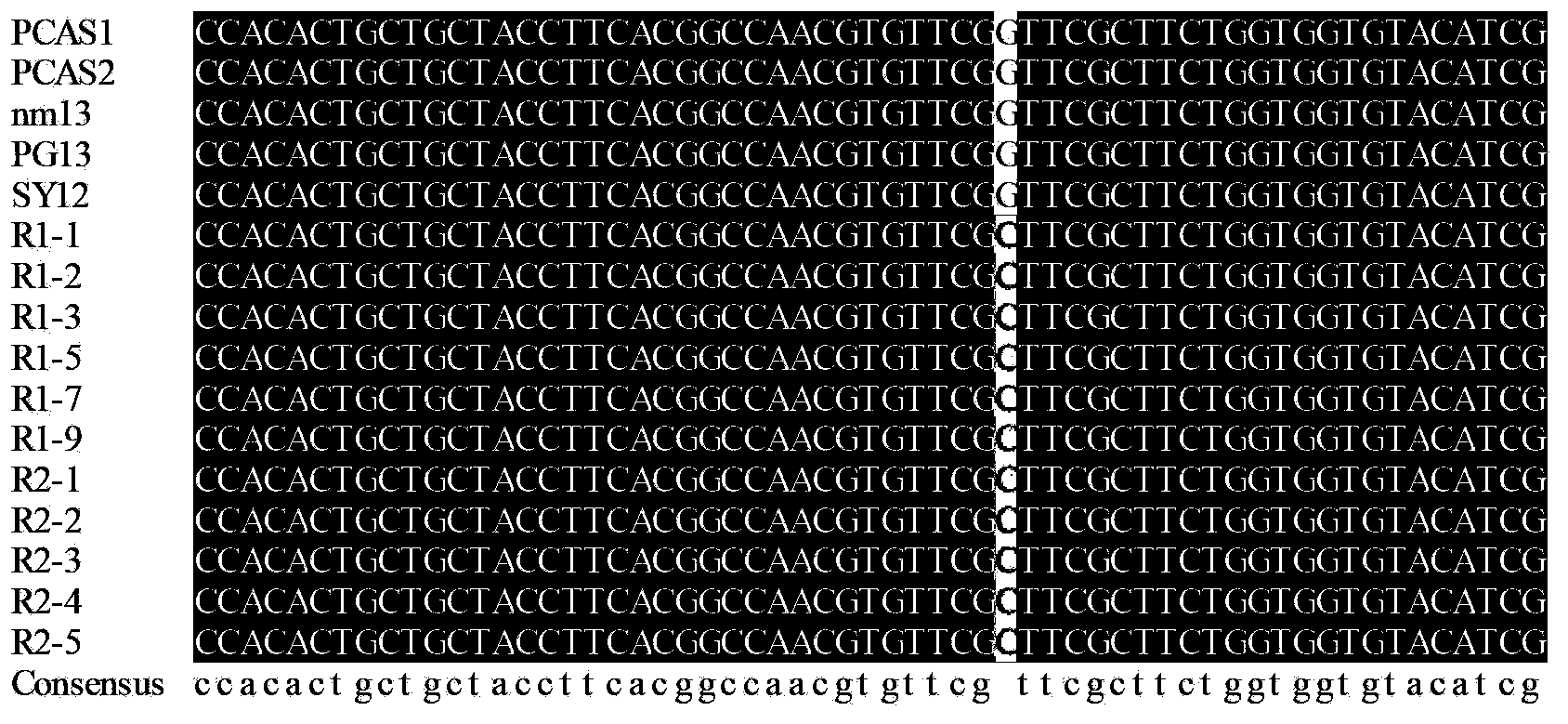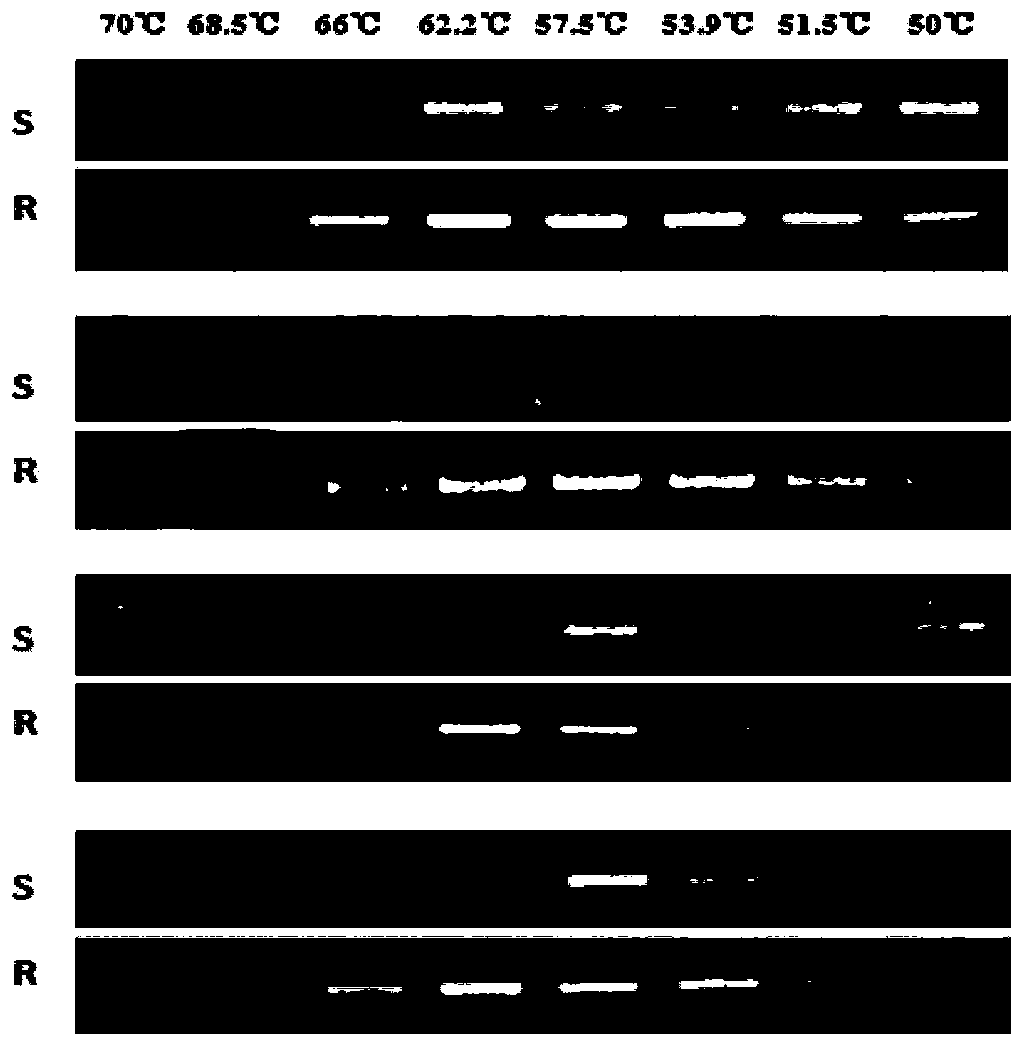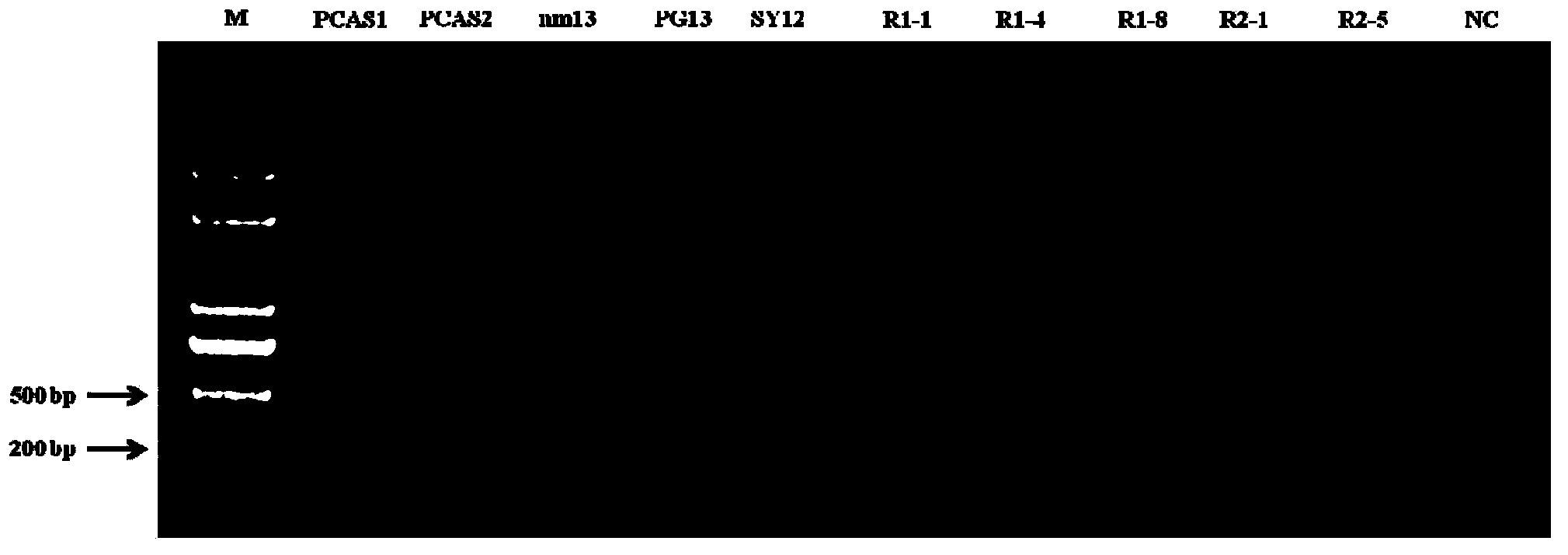Method for detecting phytophora capsic CesA3 gene nucleotide point mutation and drug resistance of same to CAA bactericides
A technology of Phytophthora capsicum and drug resistance, applied in the field of molecular biology, can solve the problems of large workload, low detection sensitivity, long detection period and the like
- Summary
- Abstract
- Description
- Claims
- Application Information
AI Technical Summary
Problems solved by technology
Method used
Image
Examples
Embodiment 1
[0032] Embodiment 1, discovery of CesA3 gene and CesA3 protein mutation site in Phytophthora capsici
[0033]1. Strains: resistant strains are R1-1, R1-2, R1-3, R1-5, R1-7, R1-9, R2-1, R2-2, R2-3, R2-4 and R2- 5. The sensitive strains are PCAS1, PCAS2, nm13, PG13 and SY12.
[0034] 2. Method:
[0035] 1) Templates: Genomic DNA of resistant strains and sensitive strains were used as templates respectively.
[0036] 2) PCR amplification of cellulose synthase CesA3 gene
[0037] Primer: C3F1 (5'-TTACTTACCGTACTCCGATCGCACG-3')
[0038] C3R1 (5'-GCATGAACTCCAAAACACAACAACAGC-3');
[0039] The PCR reaction of the target fragment length less than 2kb uses Promega reagents. The 25 μL reaction system includes 1 μL template DNA (30-50ng), 0.5 μL 10mM dNTP, 2.5 μL 10× amplification buffer (containing 20mM Mg 2+ ), 0.3 μL Taq DNA polymerase (5U / μL), 0.3 μL of each primer (10 μM), 20.1 μL ddH2O, and the reaction system was multiplied or decreased according to the needs of subsequent expe...
Embodiment 2
[0046] Embodiment 2, the method for detecting mutation site in Phytophthora capsici
[0047] 1. Primer design
[0048] The strains are the strains PCAS1 and R2-5 used in Example 1.
[0049] Allele specific-PCR primers were designed according to the sequence of the mutant cesA3 gene. The forward primer was PC05F1, and the last base at the 3'-end of the reverse primer PCR05AR was complementary to the mutated base (Table 1). To increase the specificity of the primers, a mismatched base was introduced at the second base at the 3'-end of the reverse primer (Table 1, primers PCR05BR, PCR05CR, and PCR05DR).
[0050] Primers are listed in Table 1.
[0051] Table 1 Cloning of cellulose synthase cesA3 gene and primers for drug resistance detection.
[0052]
[0053] The specific reaction system is the same as that in Example 1, and the primers are subjected to temperature gradient PCR with different annealing temperatures to determine the annealing temperature with high specificit...
PUM
 Login to View More
Login to View More Abstract
Description
Claims
Application Information
 Login to View More
Login to View More - R&D
- Intellectual Property
- Life Sciences
- Materials
- Tech Scout
- Unparalleled Data Quality
- Higher Quality Content
- 60% Fewer Hallucinations
Browse by: Latest US Patents, China's latest patents, Technical Efficacy Thesaurus, Application Domain, Technology Topic, Popular Technical Reports.
© 2025 PatSnap. All rights reserved.Legal|Privacy policy|Modern Slavery Act Transparency Statement|Sitemap|About US| Contact US: help@patsnap.com



